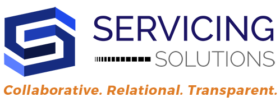Complaints to the Consumer Financial Protection Bureau (CFPB) jumped nearly 54% in 2020. And recently revealed data from WebRecon LLC reveals that complaints are showing no signs of slowing down, increasing 38.2% YTD from 2020 to 2021.
While some level of consumer complaint is a virtual certainty in any consumer-facing business—especially those that deal with loans and other finance-related transactions—a customer engagement program that is rooted in rock-solid compliance will work to significantly minimize complaints, as well as resolve them to prevent further escalation.
In fact, a search of complaints levied towards companies that service loans suggests that many, if not most, are entirely avoidable. The most common categories of complaints that many companies are getting are :
- Poor/rude customer service
- Inaccurate record-keeping
- Poor technology that diminishes the customer experience
In football terms, all of these areas would be considered “blocking and tackling.” In other words, they are at the very basics of customer service fundamentals, but not doing them properly can have drastic effects.
When thinking about reducing customer complaints, focus on the following:
Customer Experience Design:
An effective customer experience program should be built from the outside in by listening to your customers, getting to know their needs, and treating them better than your competition.
Consumers want to be treated with respect and empathy. They want timely access to accurate information about their accounts. And they want to the ability to access this information via their preferred method, whether that be through a live person or convenient self-service tools.
Designing and maintaining a “customer-first” experience is the first step in minimizing complaints.
Employee Training:
Training is all-too-often treated as a “check the box” activity that is focused on getting agents “on the floor” as soon as possible.
However, as Benjamin Franklin once said, “an investment in knowledge pays the best interest.” In the customer experience space, this means investing the time and resources necessary to ensure your customer-facing agents are set up for success. We accomplish this here at Servicing Solutions via:
- Robust New Hire Training: Rather than a half-day orientation or 3-day training session that so many are accustomed to, we provide up to three weeks of classroom training, which includes lectures, hands-on activities, and side-by-side training with someone on the floor. New hires must complete a compliance training curriculum, obtain passing scores on quizzes, a test on the FDCPA, and a final exam as well as show the necessary skills to proceed to the next level of training.
- Gateway Training: Training does not stop after the initial classroom period. Our gateway training program continues the new hire training “on the floor.” Applying the wealth of information covered in the classroom, gateway training allows new hires to apply their learning under careful guidance to ensure they are doing the job right.
- Ongoing Training: Our goal at Servicing Solutions is to retain the best and brightest and provide a career, not just a job. Every employee receives ongoing training and support to make this possible. This can include classroom training when systems or processes change, refresher compliance training or the implementation of company-wide initiatives.
The end result of a commitment like this to training is a key element in achieving customer satisfaction and reducing complaints to a minimum.
Of course, even the most well-designed customer experience programs will potentially encounter some complaints. When that happens, how the complaints are addressed is paramount in preventing them from lingering and potentially becoming formal complaints due to a lack of resolution.
Access:
Customers should have the ability and understanding of how to voice dissatisfaction when necessary, and it should be via an easy and convenient method. In other words, not providing a method for your customers to voice their issues and concerns, or making them jump through difficult hoops to do so does not make their complaints go away. It only makes them escalate. Therefore:
- Set up and publish phone numbers and email addresses that are specifically for customers to voice any feedback, issues, and complaints.
- Ensure that each of the communication channel response teams are regularly and consistently staffed. A customer’s ability to reach and receive a timely response from someone regarding their concern will deescalate many situations. Responding to all initial complaints within 24 hours is recommended, and the sooner the better.
- Test communications channels (phone numbers, voice-mails, email addresses, etc.) regularly to ensure they are working properly. The last thing you want is for your customer to dial the designated phone number for voicing feedback and concerns, and get misrouted or disconnected. At Servicing Solutions, we test and verify each channel of potential customer communication at least monthly.
Understanding The Full Story
The ability to research and investigate potential issues is key to being able to accurately understand a customer complaint, and what may need to be done to remediate the issue and prevent future occurrences. The following is important being able to accomplish this:
- A system that records and retains all customer contact calls as well as outbound call attempts
- The ability to review agent screenshots during customer interactions to identify potential mistakes, as well as a record or footprint any time a customer account is accessed or changed in any way.
I compare this to looking under the hood of a car to diagnose the root cause of a mechanical issue. Access to this information provides the ability to understand, on a case by case basis, if there is something needing to be fixed, and whether it is a technical issue, or potentially an agent training issue (again we are back at how important good training is).
Logging and Tracking Complaints
Logging and tracking all complaints provides a wealth of information that helps identify important trends that might need to be addressed. For each formal and informal complaint, the following should be tracked:
- The date and time of the complaint – This allows you to not only measure your response timeliness but also determine whether there are any time/date trends related to when the potential issue is taking place.
- The reason for the complaint – This allows you to address potential solutions, as well as discover important trends that might lead to broader remediation efforts.
- Which agent handled interaction- This will help you determine if there are repeat offenders causing a disproportionate amount of customer issues and concerns.
- How and when the complaint was resolved- It is important to confirm that the issue was in fact resolved, and have the ability to readily get back to the documentation if any further issues arise.
This process should be overseen and regularly reviewed by the Compliance Department to ensure issues are being remediated and responded to in a timely and accurate manner, that tracking and documentation is being maintained properly, and to determine if improvements need to be made with technical systems, agent training, or the customer engagement strategy as a whole.
Designing and maintaining a customer-first experience for all interactions, one that is guided by solid compliance fundamentals, will work to prevent your organization from being part of these recent increases in CFPB complaints. We’d love to talk about how we do this for our clients and how we might support you. Drop us a line at sales@servicingsolutions.com.


